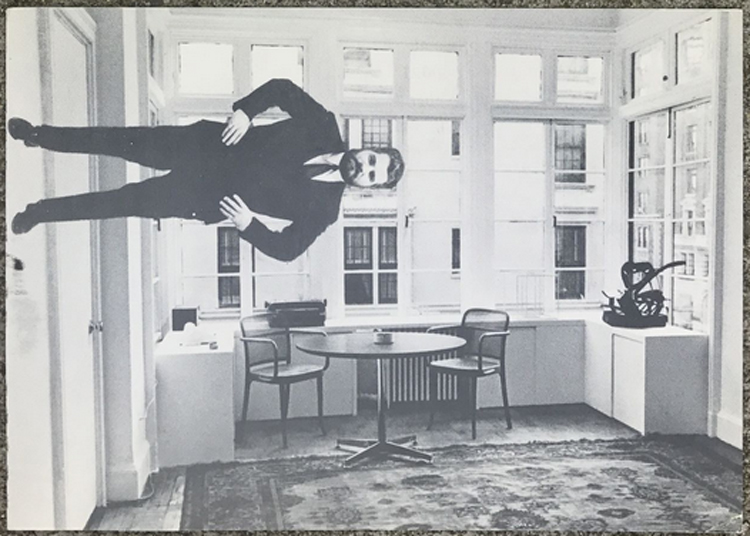[ad_1]
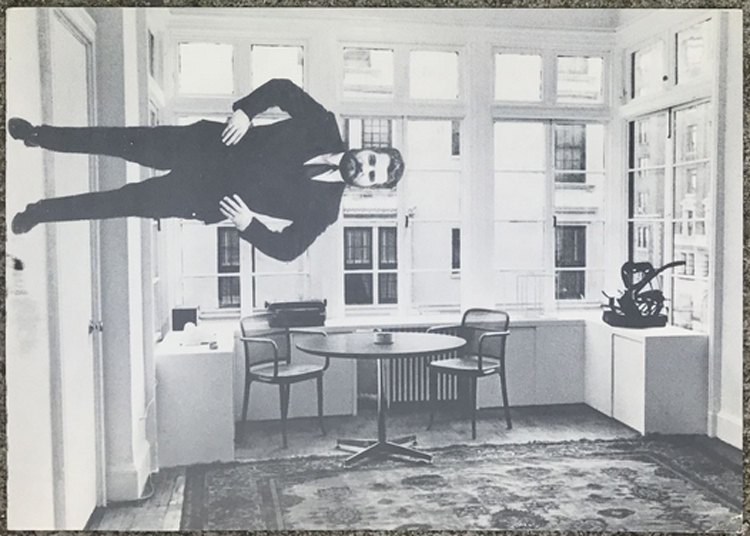
John Gibson.
COURTESY ESTATE OF JOHN GIBSON
In this column: A remembrance of art dealer John Gibson, Rob Wynne discusses early influences, new monographs on Jane Benson and Robert Murray, and an intimate look at New York’s beloved Film Forum.
John Gibson (1933–2019)
The imaginative and often rambunctious art dealer John Gibson notably claimed, according to Rosalind Constable, writing in New York magazine in 1969, “I’m interested in selling people the Brooklyn Bridge or the Eiffel Tower”—things collectors couldn’t take away in their pockets or put on a shelf. The dealer, who died on March 1, proffered the work of such avant-garde and conceptual figures as Dennis Oppenheim, Christo, Robert Grosvenor, and Donald Judd.
He came from Chicago, where he’d drive a taxi at night to make ends meet, before moving to New York in 1963, where he opened a tiny gallery on the Upper East Side to house big ideas suitable for a universe of skyscrapers. He sold 18 monumental sculptures by artists ranging from Donald Judd to Sol LeWitt to the Six Flags amusement park over Georgia. Moving the ideas up north, the gallery sponsored works like Oppenheim’s Annual Rings, in Ft. Kent, Maine, for which the artist cut circles into the snow and ice of St. John River, acknowledging that in a year’s time, the work would melt away and be replaced by photographic documentation. Gibson’s choices of European and American artists captured the moment and much of the future. He notably exhibited in a male-dominated landscape the work of a number of important women artists, including Eva Hesse, Meg Webster, Nancy Haynes, Deborah Whitman, Janet Rifkin, Samm Kunce, Shelagh Keely, Jennette Cole, Merrill Wagner, and Eve Andree Laramee.
Gibson’s eponymous SoHo gallery, which opened in 1971, closed in 2000. Gibson was the first director of the legendary Park Place Gallery, specializing in cutting-edge art, including the imaginable and the unimaginable.
Born in 1933 in Chicago, he entered the armed forces from 1950 to 1952 and then, under the GI Bill, he studied criticism and theater at the University of London. Returning to the United States, he worked variously as a traveling book salesman and held jobs at galleries, including Marlborough and Betty Parsons. His son, John, recalled, “One of my father’s favorite statements was ‘I remember the future.’ It’s an optimistic misquoting of the philosopher Soren Kierkegard, whose Either/Or was a mainstay of Existentialism. The way that I think he meant it was that the future could not be bad because he already remembered it. It could only reflect forward-thinking.”
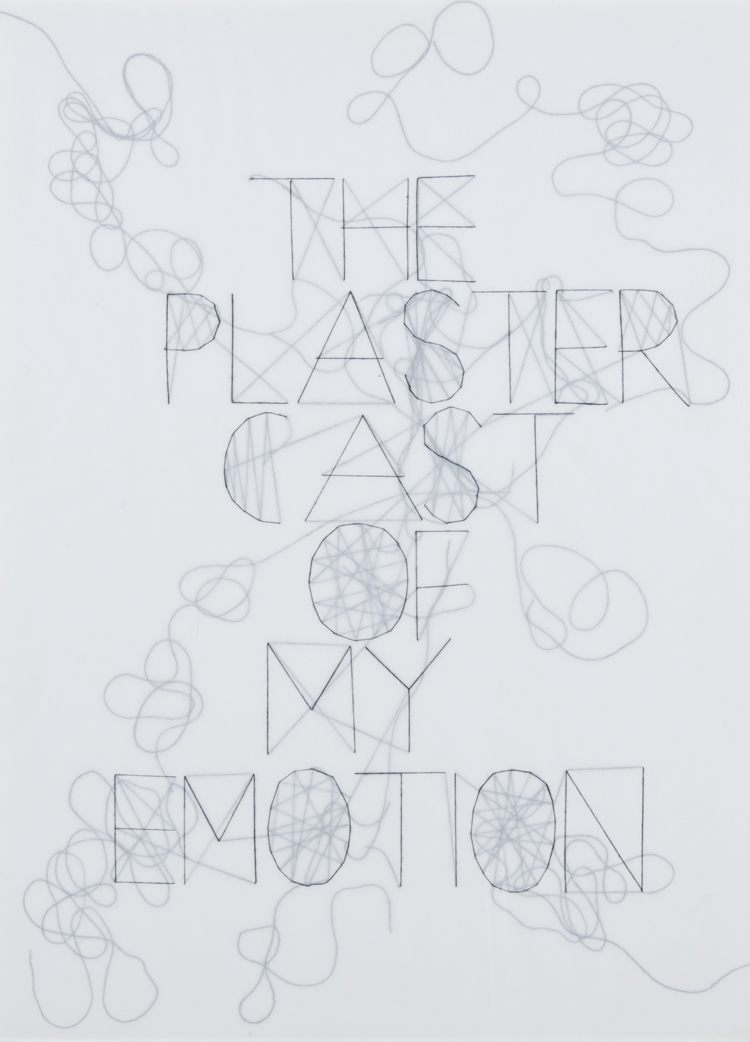
Rob Wynne, THE PLASTER CAST OF MY EMOTION, 1999, thread and archival velum.
COURTESY THE ARTIST AND LOCKS GALLERY, PHILADELPHIA
The Mind of Rob Wynne
It’s easy to underestimate the persistence of visual impressions, and how much they can influence us, subliminally and not. They embed themselves in our minds and appear unbidden in our thoughts and creative work. We don’t have to understand or even like them, but once there, they assume control. Consider the strangely un-categorizable work of Rob Wynne. It suggests many strands of subconscious, ever-enigmatic narratives.
Wynne, who just had a show at the Brooklyn Museum of his inimitable hand-poured mirrored-glass pieces and sculptures of insects installed amid historical American paintings and objects, is a conceptual artist with deep, tangled roots in literature, painting, sculpture, drawing, embroidery, and glass-making. He activates the past through light, reflection, and interspersed words, and, in so doing, re-contextualizes the present, often ironically. Punctuating one room was the word “Masquerade,” in lurid-colored bubbly letters. He recently discussed with me the nature and power of his artistic sources by tapping into his memory bank and pulling up images and descriptions of images that moved him growing up.
Here’s Wynne:
I think a lot of the illustrators that I was interested in were mental more than visual influences. As an adolescent, I had almost no interest in the typical comic books that children of my generation read. I was very interested in music and then, when I first became aware of ‘illustration,’ the biggest influence on me was Aubrey Beardsley—you could even say I was obsessed. The Yellow Book became my book. My eyes went out on stalks as I took in his erotic and fascinating vignettes. I was also somewhat subversively interested in Beatrix Potter, in the sheer magic of her combination of stories and creatures. Also Dr. Seuss, Jesse Wilcox Smith, Kate Greenaway, and Maxfield Parrish come to mind.
I had a difficult childhood . . . and when I first saw these artists, the quivering narrative that runs through so much of their work calmed me, it gave me a secret fantasy place—seeing myself reflected in a story or a picture and realizing it could be me . . . I think that, by looking at art, I learned how to see—to make work myself, and the ‘influence’ is actually internalized for me in the making of my work. I think work comes out of working and trying to make something, rather than being a traceable line from here to there.
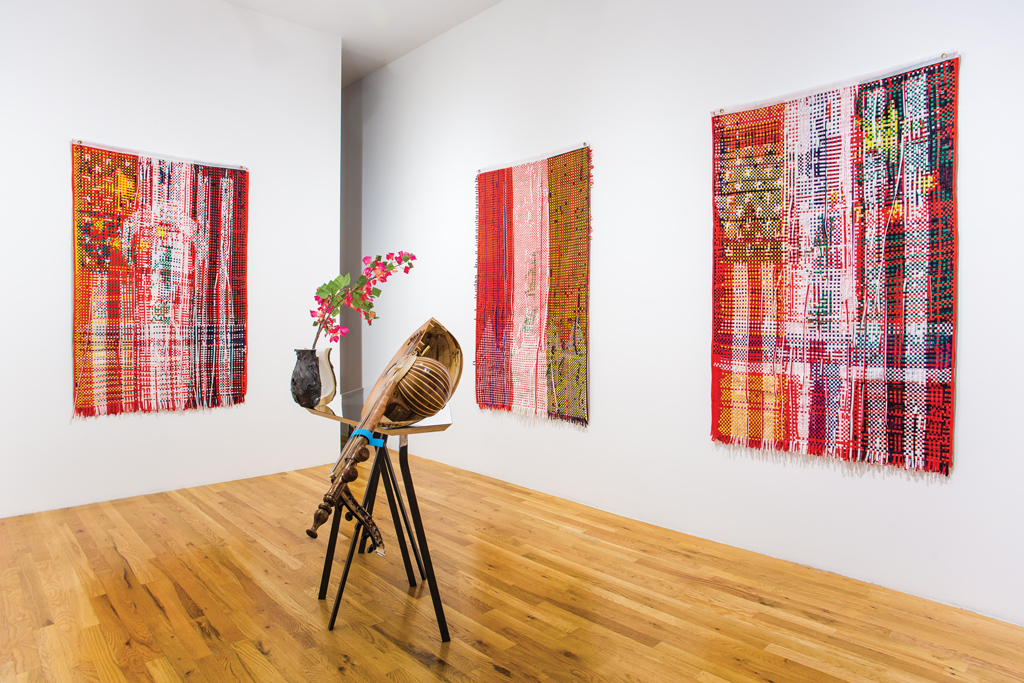
Jane Benson, A Place for Infinite Tuning IV (foreground) and Family Portrait III, I & II (background, from left to right), 2015, hand-cut oud and djose, artificial flowers, plywood, mirrored Plexiglas, and steel.
DANIEL TERNA/COURTESY THE ARTIST AND LMAKGALLER
Jane Benson’s Art of Reinvention
Also plumbing the depths of associations is Jane Benson, whose handmade conceptual art links all manner of ideas and materials, geographically, intellectually, and emotionally.
In her new monograph, aptly titled A Place for Infinite Tuning (Skira), based on an exhibition at the Contemporary Arts Center in Cincinnati, Benson demonstrates how she has been deconstructing, analyzing, and reassembling her visual, musical, and intellectual landscape, never arriving at a predictable place but giving form to social and political realities. Her inventions are quiet, poetic, and often witty—for, what could be funnier than stringed instruments sawn in half so that each side can be played individually and/or in concert with other halves in public halls or digital spaces across the world?
The book shows us video images of the “performers”—family members—playing in their own homes in the U.S. and in Iraq with images of cut-up and interwoven texts as backdrop. The players are two Iraqi brothers, who fled Baghdad in the early 2000s. It explores beautifully, and not too didactically, “contemporary geo-cultural disruptions through division and rupture.”
Benson also blocks out words in literary texts such as those of the enigmatic, poetic “memoirs” of German author W.G. Sebald, and so creates infinite possibilities for new compositions, leaving the reader to fill in the blanks, and setting a rhythm for reading and interpreting—and perhaps suggesting a revised history.
Enriching and further confusing the associative mix in her art are faux flowers and plants, like huge still lifes, with each piece hand-cut to deceptive effect, as well as mirrors, inspired by disco globes, underscoring the variability of connectivity. Reflections, we realize, can’t be controlled, but they can and do link many realities at once.
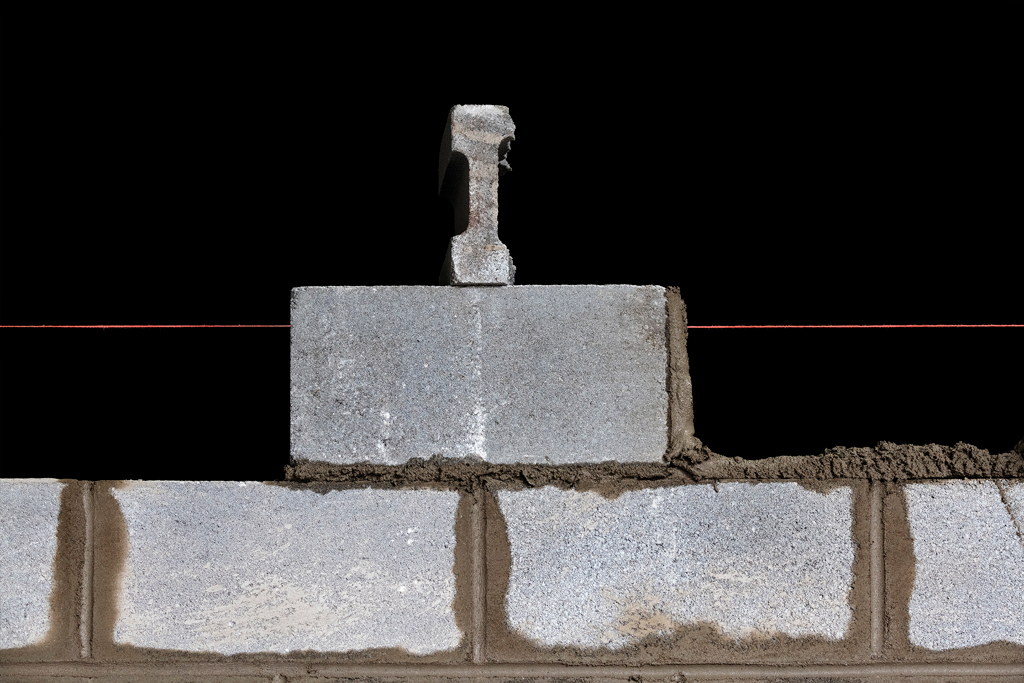
Jan Staller, Plywood and Mortar, 2018, included in Film Forum: Under Construction 2018.
©JAN STALLER
Jan Staller’s Picture Show
Strictly to the point are the digital photographs of veteran New York City portraitist and constructor of vision Jan Staller. He has produced a book of images for and about the storied, scruffy, and well-loved Greenwich Village movie house Film Forum, which has earned the hearts of New York for its rich history and its touches of warm funkiness. In Staller’s book, Film Forum: Under Construction 2018 (published by the nonprofit theater), with its introduction by film director Joel Coen and preface by Film Forum’s director, Karen Cooper, we see the elements that together support the magic of cinema.
Technology has neither wildly enhanced Film Forum nor undermined it—just clarified and sharpened our view of the body and its internal organs. Nothing is too small for Staller to home in on. He explores his subject from the heart—that is, showing the concrete energizing core of the theater, with its screws and bolts and seats all shown in sharp contrast—the solid structures that shape and contain imagination.

Installation view of an exhibition of Robert Murray’s sculpture at Dag Hammarskjöld Plaza, New York, 1972.
©ROBERT MURRAY/COURTESY SKIRA
Jonathan D. Lippincott on Sculptor Robert Murray
In a public-art sculpture, the Post-Minimalist sculptor Robert Murray explains in an interview in Robert Murray: Sculpture, a new monograph by Jonathan D. Lippincott (Design Books), “What you want is for the piece to look convincing, like it was meant to be there, and not just plunked down and left. In an ideal situation you work with an architect and integrate the sculpture into the site plan at the very beginning. The important thing is that the opinions of each person are being respected.”
Murray is clear and plainspoken, and always ready with unexpected twists and insights, just as his work is. Born and raised in Canada, he brought that culture to bear on the cutting-edge American creative landscape in the 1960s and ’70s in New York, with friends and mentors who included the likes of Barnett Newman and David Smith.
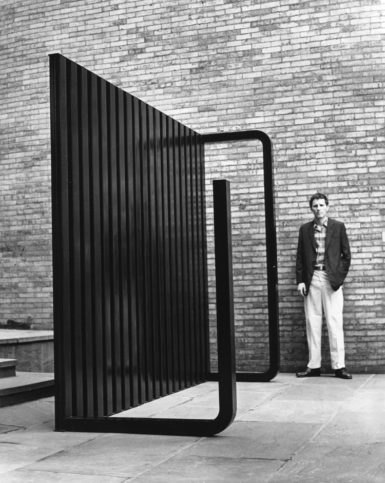
Robert Murray with his Ridgefield, 1967, installed outside the Jewish Museum in New York for the exhibition “Robert Murray: Sculpture,” 1967, which overlapped the city-wide exhibition “Sculpture in Environment.”
©ROBERT MURRAY/COURTESY SKIRA
Elucidating the evolution of Murray, the sculptor, and the nature of life in Canada and New York at a time when abstraction was dominating the landscape, is a text by art director, curator, and designer by Lippincott, whose father founded the eponymous sculpture fabrication company.
Murray’s sculpture is explored in photographs dominated by saturated colors and assertive shapes. The large, uncanny primary-colored sculptures bridge hard-edge and slightly crumpled steel forms.
With pictures of nearly 200 works that quietly converse with the history of modern art, including the paintings of Newman, Matisse, and Stuart Davis, we are given a broad overview of Murray’s concerns—his process, materials, and inspirations. And in a long and insightful discussion with Murray, Lippincott extracts insights into the nature and readings of sculpture. At the same time, Lippincott provides a social document, revealing the lives and concerns of the times. Like many of his cohorts, Murray is particularly interested in flying and, as in the work of the late David von Schlegell and Steve Poleskie, we can perceive the suggestion of motion and the awe inspired by the breadth of landscape, a sense of a romantic minimalism.
Back on the ground, Murray speaks about the tipi structure made by Native people in Saskatchewan. The tipi is an architectural form that inspired many of Murray’s own sculptures in clay, leather, and later bronze. Murray said, “I suppose a lot of my work has ended up having an interior and an exterior aspect to it: in some cases you can get into a sculpture to explore it, and in other cases you walk around the piece and see it from afar. That dialogue between those two experiences really tells you what the piece is about, and the tipi form becomes less important.”
[ad_2]
Source link

